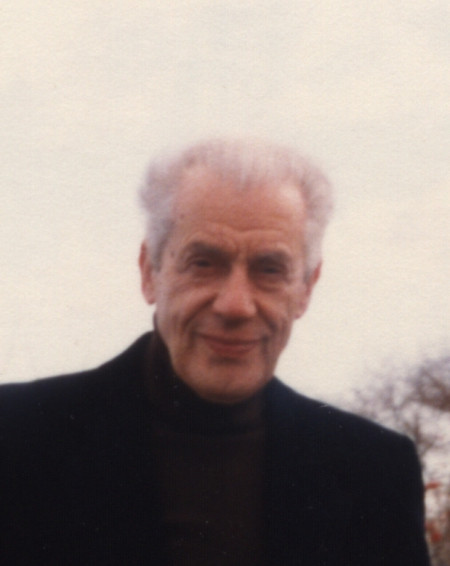
14 December 1910, Törökbecse – 4 October 2000, Budapest
The ranking member of Hungarian performing arts pursued his higher education studies at an irregular manner. It was a common practice that the one, who could, took part in postgraduate programs abroad, after the completion of studies at the Academy of Music. Péter Solymos began his higher level piano studies in Vienna and Paris, and then attended Dohnányi's artist-training class at the Master's villa in Széher Street between 1932 and 1934, already possessing a degree. He received his state artist degree for his performance of Beethoven's Waldstein sonata (June 11, 1934). Although, his attraction to unpaved paths is indicated by that he as a first-year student of the artist trainer performed Liszt's Dante Sonata for the student concerts' public at the Academy. The Dante Sonata, which was not part of the cultivated repertoire so much that even the passionate Liszt-performer, Bartók, did not program it!
He retired from the stage long ago. So that the aged music listeners can remember his seemingly distanced, cold Beethovens at most, which were in fact heated by innate passion (Piano concerto in B-flat major with Klemperer, 1949), and his matured Bach-playing. I myself identify him with the music of the 20th century, as well, probably unjustly. None of his par excellence pianist contemporaries played so much of the new music as he did. Because Kadosa, Kósa, Szelényi, who played full premiere-evenings in their younger years, were composers as well, at once.
It was not by accident that societal organizations recommended Péter Solymos already at autumn in 1945 to participate in exchange concerts abroad, mainly as a performer of the 20th century piano literature, when the aim was the resuscitation of the paralytic international relations.
The years of the war saw his artistic break-through. Bartók, Debussy, Ravel were then his ‘triple stars'. He played the Three Etudes by Bartók (1943), which the composer himself put aside after its premiere in 1919; the Piano Sonata (1941), which the Hungarian public could hear – rarely! - only by Bartók; the Sonata for Violin and Piano No.1 (1943) within a few months with Péter Szervánszky and Sándor Végh. He programmed first the entire first book of Debussy's preludes, the full Gaspard de la nuit cycle of Ravel, as first among our pianists. The violin-piano sonatas of both composers were included in his repertoire. He was among the performers of the Freedom–matinee at the Hungarian (today National) Theatre, at the end of January in 1945, not by accidence. He played Bartók, of course.
He went to London and Rome with a state scholarship in 1947/1948 – at the last possible moment. His European perspective was almost full when became a teacher of the Academy of Music in autumn of 1948. But not a star-teacher of it. Twinkling and ostentation were never among the traits of his personality. The 1950s were hardly favorable for him, the ‘Western'. Characteristic is that Solymos, dedicated to contemporary music, had not pressed a single key at the three Hungarian Musical Weeks (1951, 1953, 1956), as well as that he was insulted by the 2nd degree of the Liszt Prize at age 47. Let us consider that he was an authentic interpreter of works of Durkó, Farkas, Huzella, Lajtha, Mihály, Soproni, Szabó, Szőnyi, Veress and others for decades.
In spring of 1962 the Chamber Music of Our Age cycle, forerunner of any concert series beginning with ‘Our Age' or ‘Our Days', was established, initiated by Péter Solymos, Magda Szávai and József Ujfalussy. It is indescribable today, what the music of the late Stravinsky and the hardly known Schönberg and Webern meant at that time.
He was teaching at the music academies of Japan for years from 1973, as a pioneer of the Hungarian instrumental pedagogy. The great old of the Hungarian piano art has been retired for many years, after an irregular, not Euclidean career.
B. J.


